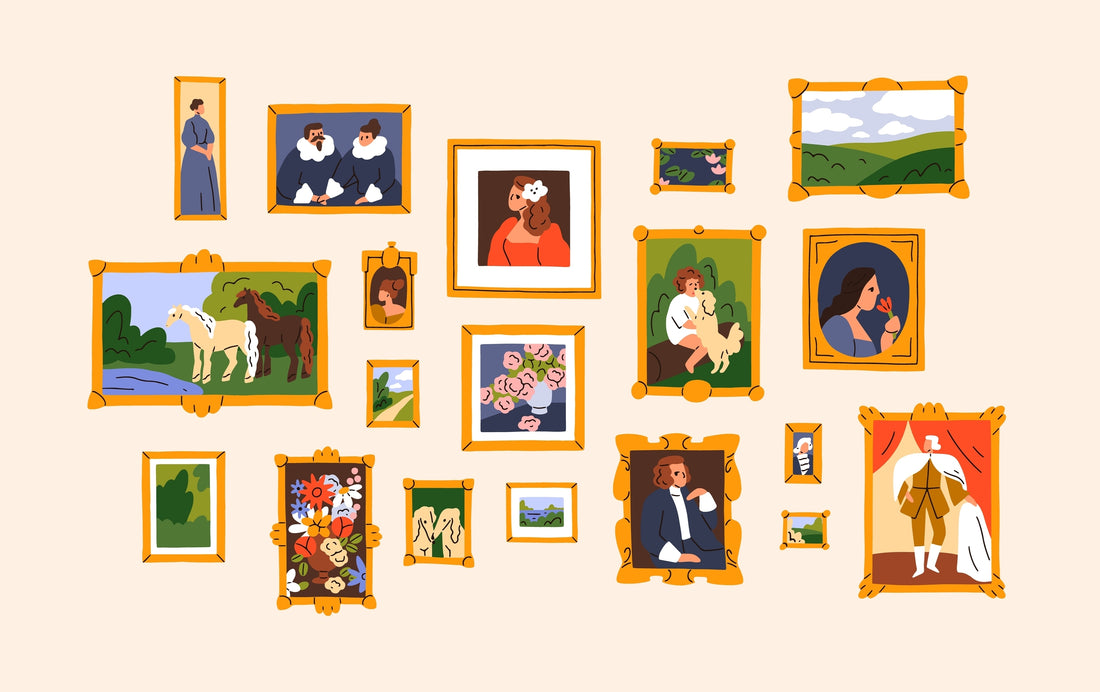The best things about staging your exhibition are that you can test the market for your art, learn from listening to visitors, build your art network … and keep all the profits from sales.
Here's how you go about planning it.
1. First, define your purpose.
Selling: An exhibition is a prompt to buy. Your friends, family and fans have been waiting for the right time to get one of your pieces. This could be it.
Profile raising: Your work should be seen as a cohesive collection (body of work) and you must make the most of this event. Invite everyone you know and their friends, harness your social media, send press releases, and court galleries and curators.
Fun: Too easy, as the hipsters say. Have a group show to share the workload, capitalise on existing strengths, enjoy each others' successes and attract a larger crowd.
2. Solo or group?
A solo show puts all the focus on your work - but you also shoulder all responsibility. If you are new to this game, it is easier to organise a group event.
The number of exhibitors depends on the venue. Three artists is a good number and each should show enough work to demonstrate their range and style. Eight to 12 works each is ideal.
Choose co-exhibitors strategically.
- Pick artists slightly more advanced in their careers so you can learn from them.
- Identify partners who offer skills you lack, such as publicity, organisation or the ability to pull a crowd
3. Location
A low-key show could be anywhere: a church hall or an empty shop. However, people expect to pay bargain prices in a bazaar atmosphere, which will affect their perception of the quality of your work. To be taken seriously, your work needs to be well-presented. Ideally, there will be a hanging system (with wires) in a gallery or gallery-like space.
Research venues, ask art friends, invite suggestions on social media, Google "gallery space for hire", and contact your local council (they often have an arts officer who will be able to help).
If you are new to this, be prepared to lose money on the event and consider this a marketing exercise. Venue hire fees can vary widely, depending on whether they are commercial space providers.
Scope out the space to determine how many pieces will fit and what sizes will suit.
You will also need to find out whether you need public liability insurance. It is not complicated to apply for and need not cost very much.
4. How long?
If the exhibition space is not in a high-traffic area and you accept that almost every visitor will have been invited by you, then a short show makes the most sense.
You could even have just a one-night event. In my experience, most sales happen on opening night.
If it is a group exhibition, or in a more high-profile location (where people may just wander in), it is good to have a couple of weekends during the show.
5. Handling sales
You can get a card reader system, such as Square, for around $40, connected to your bank account. It is easy to use and set up.
Think about whether you will allow people to take their art home straight away, or whether you will need it to keep the exhibition looking good for the whole show.
6. Getting the crowd
Send press releases to local newspapers, radio and regional TV at least two weeks beforehand. Look at my blog on my website for more information about publicity. Give galleries and curators a month's notice and follow up with a reminder email one week before. Don't expect a response from media or galleries - they get swamped with material. They are not being rude.
Invite everyone you know. Be shameless. A burgeoning crowd builds a sense of excitement. Personalise each invitation and make phone calls to people you know to ensure they turn up.
7. Setting up
Create a catalogue for your website and send out the link at least one week before the show opens. Promote early access to the catalogue on social media and the show invitations.
Consider whether you are prepared to sell works before the show opens. This is a common practise and you can open with a few red dots.
Set aside a day to install the artworks. Reserve the highest profile positions for your most spectacular pieces. Have printed catalogues for visitors and decide whether you want printed wall labels or just catalogue numbers.
If you have an opening night, recruit someone to handle sales - leaving the artists to "glad hand" the visitors.
If you are serving alcohol, you should have someone with Responsible Service of Alcohol certification behind your bar. You also need food to counteract the effects of booze on an empty stomach.
